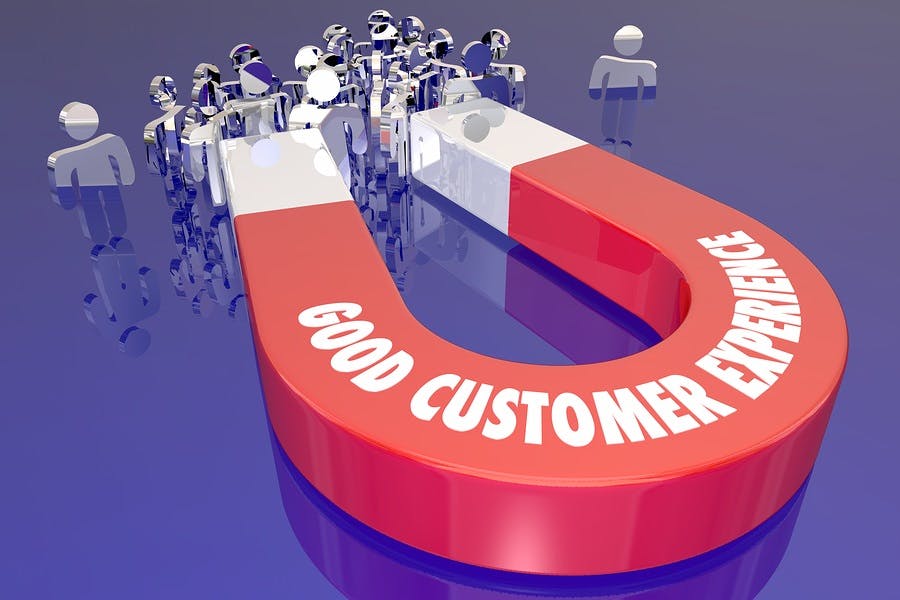Creating a winning customer experience starts first with the Employee Experience.
The customer. It’s any person or group receiving a service from an individual or organization. If you run a company, it’s the person buying your t-shirts, pizza, or software. In healthcare, it’s the patient. In education, it’s the student. The customer in a not-for-profit may be the child in a remote village who receives food and medical care. In any case, the customer is the reason every organization exists — the reason people have a job to come to. If this is the case, why are so many of them doing such a terrible job giving the customer a wonderful experience?
Most organizations share the same problem: They are desperate to win their customers’ loyalty and affection but don’t know how to do it. Bribery with discounts doesn’t work. Innovation doesn’t work, because their competitors just out-innovate them. So, they spend fortunes and waste years fishing for something that does work—and usually fail.
Happy customers
A comparative few organizations are getting it right. What’s their secret? It’s right in front of them, and it’s right in front of you, too. It’s your employees. They are the secret. The trouble is, most organization don’t treat their employees as though this were true.
In order to create a sustainable, world-class Customer Experience (CX), an organization must first create a sustainable, world-class Employee Experience (EX). Think of it this way. Creating a wonderful CX or PX (Patient Experience) or SX (Student Experience) is like gardening. You can’t order up the results you want — healthy plants — by simply waving your hand. Gardening is a process-based activity; you attend to the components that create the desired outcome. That means using soil amendments, watering, and weeding. The gardener can’t do much more than that, but if done well, the odds of a strong, plentiful harvest are high.
Growing an organization works in the same way. Success comes through quality products, excellent patient services, strong customer support… and employees who care personally about delivering an extraordinary experience, every time. When an organization creates a top-notch EX, the likelihood of a superior CX increases exponentially. When the EX is poor, chances are the customer will see the effects.
EX = CX
Your employees are the soil and the nutrients in which your customer experience grows. If you have a workforce of engaged people who feel respected and appreciated, and if they trust their leaders enough to invest their full selves in the organization, your CX will take care of itself.
Despite this, too many organizations try to dash past EX in favor of CX. Why doesn’t this work? Because CX is an outcome. For decades, companies have treated customer satisfaction as though it were something they could conjure out of procedures, processes, perks, and pricing. Wrong. That’s like deciding to lose twenty pounds by taking weight loss pills while ignoring diet and exercise. Even if you get results, they won’t be sustainable.
A winning CX is the direct results of the attitudes and behaviors of your employees. When you went through your most recent customer service trauma, did you ask yourself: “What type of experience are we providing for the employee(s) who were involved in the problem?” Probably not. But was the crisis a direct result of someone failing to step up to keep a promise, identify and resolve a concern, or provide one small extra bit of service? Likely. Yet, for most organizations, their awareness of the EX does not match up with the important role it plays in determining the CX.
Focus on the employee experience
Employees are the face of your brand. They’re on the front lines and in direct contact with your customers. Yes, the customers are also seeing your website, marketing, hospital, real estate, or school library, but those do not outweigh a school counselor who stays late to help a student with college scholarship forms, or the nurse who takes the extra time to comfort a family that is confused about treatment. Consumers are human, and humans intuitively respond to human interactions more than they do slogans, packaging, or discounts. Focus on the employee experience. This has more potential than the customer experience to move the needle for your organization, by whatever metric you choose: revenue, growth, retention, customer satisfaction, number of guests registered, patient satisfaction, and so on.
Think about the costs, financial and otherwise, of implementing a CX management program where employees aren’t engaged. Some organizations spend a fortune on elaborate customer service safety nets designed to keep employees from damaging the customer relationship. Why? Because their employees don’t care. They’re having a poor experience, so they’re not motivated to provide anything more than that to the customer. This is the “Law of Congruent Experience.”
The Law of Congruent Experience
Employees will deliver a customer experience that matches their own experience in the organization
Indifferent employees mean indifferent customers. Disengaged employees put in minimal effort to take care of the customer. Customers respond in kind. In contrast, employees who are engaged and trust their employers will provide a great CX because they choose to. You don’t need to rely solely on call scripts or a patient’s bill of rights to keep them from damaging your brand. A terrific Employee Experience equals a superb, loyalty-winning, profit-creating customer experience.
This article was reposted from the DecisionWise blog.
